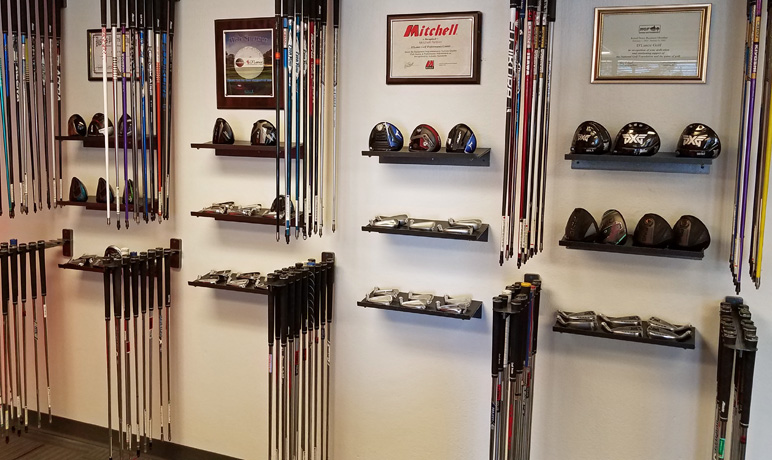There are so many new iron shafts coming this year it will make your head spin! But it is interesting that with all of the new iron shafts, the major manufacturers pick a few stock “no upcharge” options, and then give you little or no guidance as to why they have chosen those shafts. We can help you pick from our database of over 400 iron shafts to get your optimum performance! And, this works for re-shafting your current irons as well as for a new set!
The Most Important Iron Shaft Fitting Characteristics
In our fitting experience over the last 20-plus years, we have found these to be the most important iron shaft fitting characteristics. Weight, Flex, Launch and Spin. Of course, when you are building an iron the factors of length, loft, lie and swing weight or MOI come into play as well.
Weight
There are several factors that go into determining weight of the shaft. Probably the most important factors for determining shaft weight are the golfers Tempo and Transition as well as club head or swing speed, and related distance. A golfer with a slow tempo and transition that does not hit the ball very far (120 – 130 yards with a 6 iron) will benefit from a lighter shaft, perhaps even graphite. A golfer with a faster tempo that hits a 6 iron 200 yards will benefit from a heavier shaft, more than likely steel. If you think that a lighter shaft will get you more distance, that is not always the case. A lighter shaft way create more club speed but more inconsistent contact. I helped a gentleman pick up a full club more in distance and better accuracy by going from a 90 gram shaft to a 110 gram shaft.
Shaft Flex
Now we get into a real gray area. Since most major manufacturers do not frequency match their shafts, they go by designated flex on the shaft, i.e. W or L (women’s), A or M (senior), R (men’s regular), S (men’s stiff) or X (men’s extra stiff). We can tell you from our testing over over 2,000 shafts each year that a light weight shaft in R will play MUCH softer to flex than a heavier weight shaft. For example, a 90-95 gram steel shaft in R flex will play to a high end Ladies flex or low end Senior flex whereas a 120 gram steel S flex will play at least S and maybe even X flex. The most important factors in determining shaft flex are a golfers tempo, transition, release point and distance (based upon club or swing speed). But then, you must match the shaft weight to the shaft flex to get the optimum performance. A slow, smooth swing will dictate a softer flex than a fast, aggressive swing.
Launch and Spin
Manufacturer’s of iron heads will not spend much time on selecting several shafts with different launch and spin characteristics. With the strengthening of lofts in irons these days (a 6 iron is like an old 4 iron), it is important that golfers get the proper launch and spin to optimize distance AND the ability to stop the ball on the green. We tend to fit the average golfer into slightly higher launching, higher spinning iron shafts for this reason. The most important factors for determining launch and spin are release, attack angle and peak height.
Basic Fitting Recommendation
When you go through our fitting process, we use your swing data to identify which shafts may work for you. We then show you the available shafts that meet the criteria of shaft weight, flex, launch and spin. We literally have hundreds of shafts that we have tested that can help you find the best performing shaft(s).
How Our Club Building Process Creates Your Perfect Clubs!
Dan Sueltz


